Concrete Patio on a Sloped Yard: Engineering a Durable Outdoor Space
A well-designed concrete patio can transform a sloped yard into a functional and visually appealing outdoor living area. However, building on a slope presents unique challenges that require careful consideration of grading, drainage, and structural integrity.
Angel Sosa
2/9/20255 min read
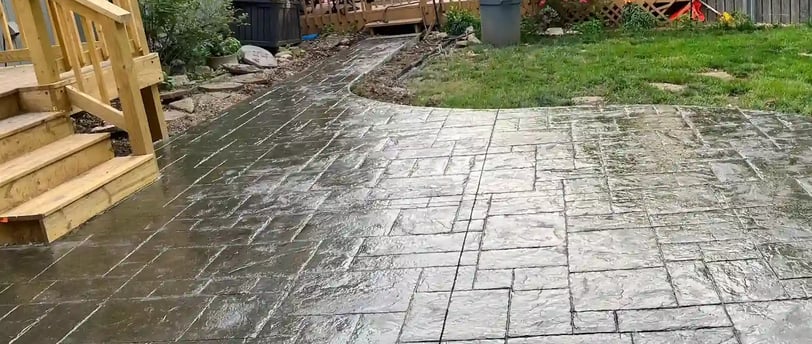

Quick Overview
A well-designed concrete patio can transform a sloped yard into a functional and visually appealing outdoor living area. However, building on a slope presents unique challenges that require careful consideration of grading, drainage, and structural integrity. Without the proper techniques, a patio on uneven ground may experience water pooling, soil erosion, or structural instability. This comprehensive guide will walk you through the essential steps to engineer a durable, long-lasting concrete patio, with insights into proper construction techniques, material selection, and maintenance best practices.
Understanding the Challenges of Sloped Yards
A sloped yard may seem like a difficult place to construct a concrete patio, but with the right approach, it can be turned into an advantage. Several challenges must be addressed before construction begins:
Water Runoff & Drainage Issues: Sloped yards often experience excessive water runoff, which can lead to erosion and pooling. This can weaken the patio’s foundation over time, causing cracks and surface degradation.
Soil Erosion & Instability: Loose or shifting soil can make it difficult to build a stable foundation. Without proper reinforcement, the concrete slab may settle unevenly or crack.
Uneven Ground & Structural Support: Since concrete requires a stable base, working with a sloped surface means additional grading, retaining walls, or even pier supports might be necessary to ensure structural integrity.
Accessibility & Usability: A steeply sloped yard can make the patio difficult to use if not properly leveled or tiered, requiring steps or multi-level platforms to enhance usability.
A thorough assessment of these factors will help determine the best construction approach for your unique landscape.
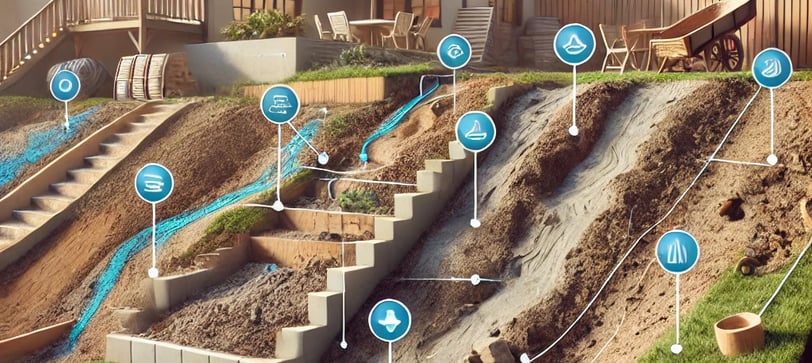

Grading: Establishing a Solid Foundation for the Patio
Grading is one of the most important steps in ensuring a long-lasting patio. This process involves reshaping the land to create a level base while maintaining an appropriate slope for drainage. Here’s how it’s done:
Evaluate the Natural Slope: Determine the degree of incline using a laser level or transit level. A typical guideline is maintaining a minimum slope of 2% (¼ inch per foot) away from structures to ensure proper drainage.
Excavation & Soil Removal: Remove any loose or unstable soil, and excavate the area to the desired depth, typically 6–8 inches for a standard patio.
Compaction & Base Preparation: Compact the soil using a plate compactor to prevent shifting. Add a layer of crushed gravel or sand (4–6 inches thick) to enhance drainage and stability.
Retaining Wall or Terracing (if necessary): If the slope is too steep, constructing a retaining wall or a terraced patio with step levels may be needed to maintain an even surface.
Final Slope Adjustment: Ensure the final graded surface maintains a uniform slope to prevent water from pooling on the patio.
Proper grading not only creates a strong base but also helps mitigate future maintenance issues.
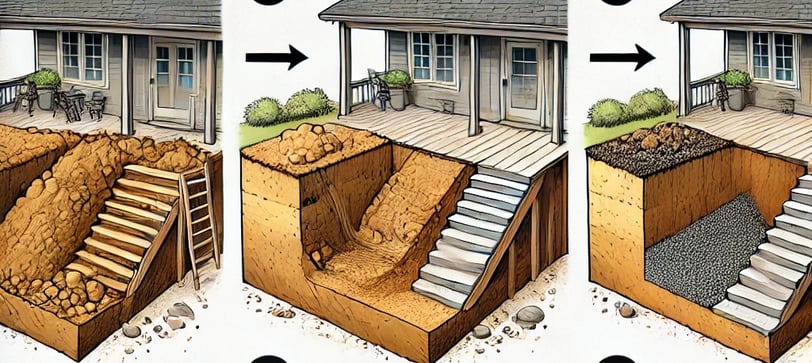

Drainage: Preventing Water Accumulation and Erosion
Ensuring proper drainage is key to preventing long-term damage to your concrete patio. Without an adequate drainage plan, water can pool under the slab, leading to cracks, mold growth, and foundation instability. Some of the best drainage solutions include:
French Drains: Installing perforated pipes covered with gravel beneath the patio directs excess water away from the slab, preventing saturation and instability.
Gravel Drainage Layers: A thick layer of gravel under the concrete slab allows for better water absorption and runoff management.
Slope Adjustment: The patio surface should have a slight incline (1–2% slope) to allow water to flow away naturally.
Gutter & Downspout Redirection: Ensuring nearby gutter systems divert water away from the patio prevents excess moisture accumulation.
Permeable Concrete or Pavers: Using porous materials can allow water to pass through, reducing standing water issues.
By integrating these drainage techniques, you can ensure the longevity and durability of your patio.
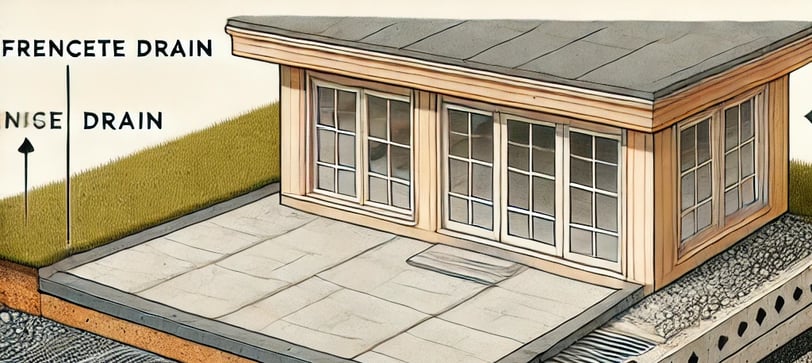

Structural Considerations: Reinforcing the Patio for Longevity
Building a concrete patio on a sloped yard requires additional reinforcement to prevent cracking and shifting over time. The following structural considerations should be taken into account:
Rebar & Wire Mesh Reinforcement: Embedding steel rebar or wire mesh within the concrete mix significantly enhances strength and prevents cracking.
Expansion Joints: Including expansion joints at regular intervals allows the concrete to expand and contract with temperature changes, reducing the risk of cracks.
Concrete Thickness: A minimum thickness of 4 inches is recommended, but for areas with heavy loads (e.g., furniture, fire pits), a 6-inch thickness is preferable.
Retaining Walls for Support: If the slope is substantial, building a retaining wall with drainage holes can stabilize the patio foundation and prevent soil movement.
Poured Footings for Stability: For extreme slopes, using poured footings or piers can anchor the patio securely into the ground.
Ensuring these structural elements are incorporated will enhance the patio’s lifespan and durability.
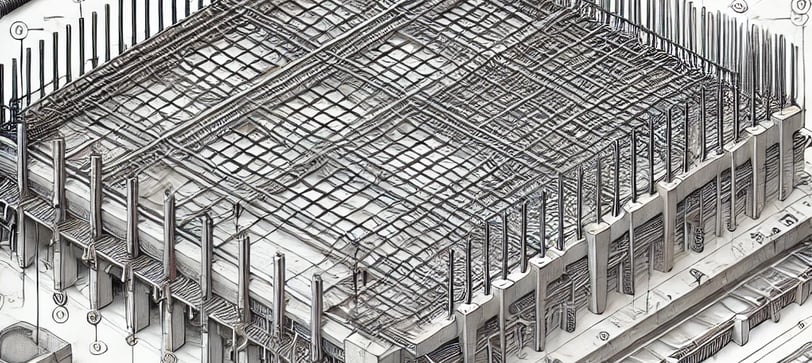

Additional Finishing Touches: Enhancing Your Patio’s Aesthetic and Functionality
Once your concrete patio is structurally sound, consider adding elements to enhance its beauty and functionality:
Stamped or Stained Concrete: Decorative finishes can create a stylish and polished look that mimics natural stone or tile.
Outdoor Seating & Fire Pits: Strategically placed furniture and a built-in fire pit can make the space more inviting.
Landscape Integration: Adding plants, garden beds, or retaining walls with integrated greenery can blend the patio with the surrounding environment.
Lighting & Accessibility: Installing outdoor lighting ensures safety at night while making the patio more usable after dark.
Protective Sealants: Applying a high-quality sealer protects against stains, UV damage, and moisture intrusion.
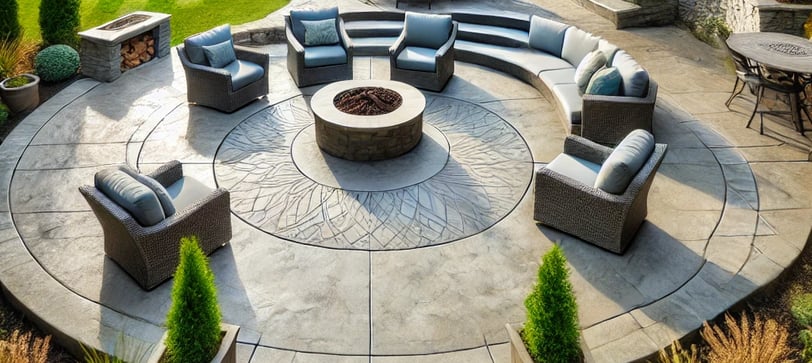

FAQs
How do you level a sloped yard for a patio?
Grading and excavation are essential, often requiring retaining walls or stepped terraces.
Does a concrete patio need rebar?
Yes, rebar significantly enhances durability and prevents cracking.
What is the best foundation for a patio on a slope?
A combination of compacted gravel, retaining walls, and proper drainage solutions works best.
Should a concrete patio be sloped?
Yes, a slight slope (1–2%) prevents water pooling and improves drainage.
For expert guidance and installation, trust ProDeck Solutions to create a strong and stunning concrete patio that withstands the test of time.
Final Thoughts
Building a concrete patio on a sloped yard requires meticulous planning and execution. By addressing grading, drainage, and structural concerns, you can create a durable and visually appealing outdoor space. Proper preparation, high-quality materials, and expert craftsmanship ensure that your patio will withstand the elements and remain a functional gathering area for years to come. For professional patio installation in Kansas City, Lee’s Summit, Overland Park, Gladstone, and North Kansas City, ProDeck Solutions specializes in expert concrete solutions tailored to sloped landscapes. Contact us today to transform your backyard into a stunning and long-lasting retreat.


HOURS OF OPERATION
Mon - Fri: 9:00AM - 5:00PM
Sat & Sun: Closed
